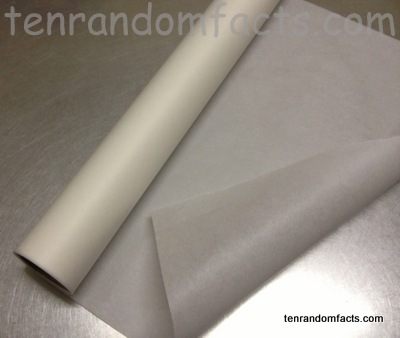Rip off the baking paper and put it on the tray.
- ‘Baking paper’ is also known as ‘parchment paper’, ‘bakery release paper’, ‘silicone paper’, silicone baking paper’ and ‘butter paper’.
- Baking paper is a non-stick paper used in baking, often to line tins, pans and trays, to prevent food from sticking to the pans.
- Baking paper is typically made by submerging paper pulp in chemicals, such as sulphuric acid or zinc chloride, or paper is covered with an agent such as silicone.
- Baking paper is also often reusable, although can wear after a number of uses, and it can be disposed of easily.
- Baking paper is made from vegetable or plant based materials, specifically cellulose.
- A French tradition, called ‘en papillote’ (in parchment) involves wrapping food with baking paper.
- Baking paper is a practical replacement of cooking grease and wax paper.
- Baking paper can be used as a stencil or template, an icing cone or a bag.
- Parchment, which is made in a similar way to baking paper, was first invented in the Ptolemaic Dynasty, in Egypt, during 305 to 283BC.
- Baking paper is heat resistant, and generally a partially transparent white colour.
Bibliography: Parchment Paper (Baking), 2013, Wikipedia, http://en.wikipedia.org/wiki/Parchment_paper_(baking)
What is Parchment Paper, 2013, WiseGEEK, http://www.wisegeek.com/what-is-parchment-paper.htm






